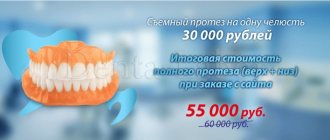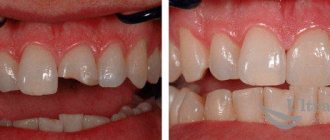Remove the tooth? Does it hurt to have teeth removed? Is it possible not to remove a wisdom tooth? These questions are probably among the top most popular among dentists. Perhaps each of us, at different stages of our lives, has been faced with the task of tooth extraction. There may be many reasons for this, which are usually divided into two groups: tooth extraction due to a certain disease and so-called planned tooth extraction.
Tooth extraction
Of course, removing a tooth is a last resort measure that the doctor takes if there are no other solutions. In case of emergency intervention, the prerequisite may be acute inflammation and toothache. In this case, tooth extraction is used to prevent complications associated with diseases such as caries, periostitis, osteomyelitis, periodontitis, periodontal disease and many others.
It is important to understand that everything is individual and the decision depends on the specific case and stage of the disease. There are also cases when a tooth needs to be removed for the purpose of orthodontic and orthopedic treatment.
Indications and contraindications for molar tooth extraction
Reasons for removing a molar tooth may be:
- purulent periostitis;
- abscess;
- phlegmon;
- large tumor in the tooth area;
- purulent periodontal disease;
- the presence of a cyst in the area of the diseased tooth;
- exposed pulp;
- longitudinal tooth fracture;
- critical tooth decay;
- critical tooth curvature;
- disease of the dental bone tissue;
- sinusitis.
The following reasons are contraindications to the removal of molars:
- acute heart diseases;
- acute viral diseases;
- flu;
- angina;
- renal failure;
- pancreatitis;
- hepatitis;
- acute diseases of the nervous system;
- oncological diseases
- initial and final stages of pregnancy;
- stomatitis;
- gingivitis
- general degeneration of the body;
- alcohol poisoning.
When is it necessary to remove a nerve in a carious tooth?
If you delay visiting the dentist, caries can develop into serious inflammation of the pulp.
Bacteria destroy all tooth tissues, their integrity is disrupted, and the process reaches the pulp chamber, that is, the nerve. This disease is called pulpitis. When severe sharp or aching pain in a tooth appears, you should immediately consult a dentist. Without receiving timely treatment, the tooth will have to be removed. But if treatment is started on time, the nerve is necessarily removed, and the tooth is preserved and continues to perform its function.
In dental practice, there are known cases of traumatic pulpitis, the occurrence of which is influenced by a blow during an attack or accident. Typically, the frontal row of teeth suffers from such pulpitis.
Another cause of pulpitis is calculi, that is, dense deposits that appear in the dental canals due to metabolic disorders.
Molar removal technology
Before proceeding with the removal of a molar, the doctor must make sure that there is no curvature of the roots. For this, an x-ray is taken. If the roots are not bent, the patient is given an anesthetic injection. After 10 minutes, the tooth can be removed.
First, the dentist carefully separates the gum from the body of the tooth. Then he grabs the tooth with pliers and begins to swing it and rotate it at the same time. After several such manipulations, the doctor pulls the tooth out of the alveoli.
In this sequence, both the upper and lower root teeth are removed. However, it is somewhat more difficult to grasp the upper molars with forceps.
Sometimes, when removing a molar, the doctor must first cut it into two or three parts and then pull out each part separately. This usually happens when the roots are bent.
In case of severe curvature of the roots, when they intertwine with the roots of neighboring teeth, removal must be done in fragments and under general anesthesia. In this case, the doctor completely exposes the gum around the diseased tooth.
If there is a cyst in the area of a diseased molar, the doctor is required to be highly qualified. This removal is done under both local and general anesthesia.
Two days after the removal of a molar, the patient must visit the dentist again to take an x-ray. This is necessary to ensure that all tooth roots have been removed.
How much does tooth extraction cost?
How much does tooth extraction cost?
Many patients ask the question: how much does tooth extraction cost and why do the prices for removal differ so much in different clinics? To answer this, we present you with a few defining points:
- diagnostics
- tools
- doctor's experience
- time allotted for the procedure
It is these nuances that determine not only the final cost of the operation, but also the positive result itself, which, if diagnosed correctly by an experienced doctor, is guaranteed.
Is it painful to remove molars?
Today, only older people remember the terrible pain during the removal of molars. Nowadays, the quality of painkillers is so high that the patient does not feel pain at all, even with difficult removal. At the same time, after the anesthesia wears off, pain, of course, occurs, but it is quite tolerable and depends on how much the gum under the tooth was disturbed.
If the pain is still severe, then the dentist recommends taking a painkiller tablet. The same analgin successfully dulls pain for a long time.
In rare cases, the patient may experience throbbing and increasing pain. This annoying phenomenon occurs due to inflammation of the socket. If measures are not taken quickly, the tissue begins to fester in the hole. This process can be suppressed with drug treatment, but sometimes you have to open the gum and clean the hole from pus.
In what cases should a wisdom tooth be removed?
Indications for removing the “eight” are:
- Abnormal placement of wisdom teeth .
Evenly growing third molars are rather an exception to the rule. Most often, these teeth grow at an angle, injuring the tongue, cheek, and moving other teeth. Sometimes the inclination is so great that wisdom teeth do not even show on the surface and can only be detected on an x-ray. Compared to our ancestors, the jaw of modern humans has decreased in length by almost 12 millimeters. That is why “eights” often simply do not have enough space in the jawbone. - Pericoronitis or too slow tooth growth . This pathology is not an absolute indication for surgery. More often, the dentist suggests that the patient simply remove the hood to avoid the development of an inflammatory process over the growing tooth. But if the patient goes to the doctor too late, then there is only one way out: removal.
- Caries . It is difficult to take good care of the “eights”. Bacterial plaque still remains on the teeth, and later, during a preventive visit, the doctor discovers carious cavities. You can suspect their appearance if the tooth begins to twitch when exposed to cold or sweet foods.
- Inflammatory process . It is also necessary to remove a tooth if an infection has been introduced into the soft tissues of the periodontium. It can provoke the development of flux or a cyst, and in this case the dentist will not hesitate.
Whether it makes sense to preserve a wisdom tooth, only a doctor can determine in each specific case.
Removal of molars during pregnancy
Let us say right away that any surgical intervention during pregnancy is extremely undesirable. If a molar tooth hurts at this time, then ideally it would be best to simply heal it. Unfortunately, sometimes this is no longer possible and the diseased tooth has to be removed.
It is highly undesirable to remove molars in the first and last months of pregnancy. It is at this time that the fetus is most vulnerable.
If it is possible to postpone the removal of a molar until the birth of the child, then this is exactly what should be done.
Under no circumstances should you hide your pregnancy from your dentist. On the contrary, this should be said immediately. In this case, the doctor will select a harmless anesthetic that will not cross the placental barrier.
If a pregnant woman is facing a complex molar tooth extraction, then this should only be done in a hospital setting. After removal, the patient should be under medical supervision for at least two to three days. This is due to the fact that very often, after the removal of a molar, pregnant women experience a sharp increase in body temperature, and this is extremely harmful for the fetus.
Let's start implanting the upper front teeth
a highly accurate surgical template
, individually made based on the CBCT image and using the 3D Shape intraoral scanner . Under the Straumann Bone Level SLActive implantation system, as part of a complete protocol for implantation of the upper anterior incisors.
Here you can observe the result of one-stage implantation of the front teeth; Straumann implants were installed. A bed for the implants was formed, which were installed in a strictly necessary position so that we could do aesthetic work not only on implantation, but also on further prosthetics of the upper anterior incisors.
You can see Straumann implants installed in exactly the right position
, as we planned. They are presented with the template removed. Bone biomaterial was placed in the sockets, which prevents the socket from collapsing in order to preserve the outer contour of the gum. In addition, in the area of the tooth that had a fistulous tract (tooth 11), in the photo it is on the right, a collagen membrane was sutured. The membrane was tunneled and secured with a single suture to allow bone to form and mature normally in the socket.
Here you see the same implants, but in front view. You can clearly see how the collagen membrane was fixed, and it should be noted that in order for the work to be aesthetic on the one hand, and minimally traumatic on the other, mucosal detachment was carried out using the tunnel method
with further installation of the membrane.
Molar tooth extraction in children
Unfortunately, young children often develop diseases in both their primary and permanent molars. Worse, it is not always possible to heal them. Dentists remove permanent teeth for children only when there is no way to save them.
Primary molars are both treated and removed. If a permanent tooth begins to grow under a baby molar, then the baby tooth is always removed, since it interferes with the normal formation of the permanent tooth.
At the same time, dentists never agree to premature removal of baby molars. Such teeth are sure to heal. If you remove a baby tooth ahead of schedule, then the baby will develop a crooked bite.
There are situations when a child’s molar tooth must be removed. Such situations include:
- molar root cyst;
- presence of granuloma;
- inflammation of the tooth root;
- inflammation of the nerve of the lower jaw;
- severe destruction of the integrity of the tooth.
Now - the stage of prosthetics of the upper front teeth
In this photo you can see the fixation of temporary crowns
on previously installed Straumann implants. It can be seen that the crowns have settled exactly as they were originally. As you remember, we decided to use the patient's old crowns as temporary crowns.
screw-retained
temporary crowns
. The shafts extend exactly to the back surface of the teeth, as pre-planned in the computer program.
You can see what the patient received on the day of the operation, namely:
on the day of the operation the patient left with her teeth!
And almost no one around you will notice that any surgical procedures have been performed. The patient looks exactly the same as she came BEFORE the immediate implantation surgery.
Temporary crowns for the front teeth, as you can see in the photo, we left the old ones.
Since the accuracy of implantation was very high, i.e. Straumann implants were positioned in the bone, I would say, with filigree precision, so there was no need to make additional temporary prostheses. Here I would just like to note to readers of the article
, those who are planning implantation and surgery - do not worry about the fact that if your front teeth are implanted in the frontal area, you will have to walk without teeth for some time.
No, that's not true. After the operation, you will leave with your teeth on the same day
.
Final picture of the result of implantation and prosthetics
You can clearly see how the Straumann Bone Level implants stand and how deep they are.
Both implants and temporary structures (crowns) cost exactly as needed. They were delivered exactly as planned, which gives a positive result. And it gives us all the prerequisites that the result of a one-step implantation of the front teeth, performed by doctors of the German Implantology Center, will be highly aesthetic and durable. And it will delight our patient for many, many years.
Is it possible to remove a molar tooth yourself?
Trying to remove a molar tooth yourself is extremely dangerous. The only exception is very severe tooth looseness. It should be borne in mind that complete removal even in this situation will not work. You will simply break off the body of the tooth from the root, and nothing more. In any case, after such an independent removal, you need to visit a dentist, who will determine what should be done next. Sometimes an artificial tooth is installed at the root, and it can last for more than one year. If the root has defects, then it has to be removed.
There are situations when you have to remove a child’s very loose baby tooth at home. In this case, you should thoroughly brush the baby’s teeth and disinfect the oral cavity. Then you should wrap your fingers in sterile gauze, loosen the tooth thoroughly, and only then try to pull it out. If this was not possible on the second attempt, then the child must be taken to the dental clinic in any case.
If you have successfully removed the tooth from the socket, then you must firmly place a gauze swab in the socket and leave it there for 30 - 40 minutes. In the next two hours, the child should not be allowed to eat or drink.
Even if the removal was successful, the baby still needs to be shown to the dentist. This is the only way to protect your child from possible complications.
Is the removal procedure painful?
Many people have a phobia towards dentists, and if removal is necessary, they simply refuse to go to the doctor. However, modern dentistry performs operations completely painlessly. This is ensured by modern painkillers. The patient begins to feel discomfort in the oral cavity only after the anesthesia wears off. In this case, the doctor prescribes special medications that relieve pain. If the socket hurts after wisdom tooth removal, you should take painkillers.
There is no need to endure pain after wisdom tooth removal. The doctor will recommend special remedies that will allow you to survive a difficult period with minimal discomfort. If the removal of a wisdom tooth causes pain in the socket, this does not indicate a complication, since this is a normal reaction of the body to tissue damage in the oral cavity.








